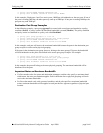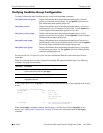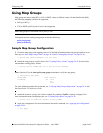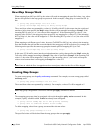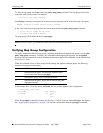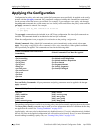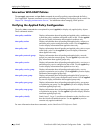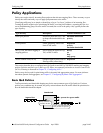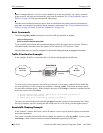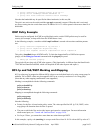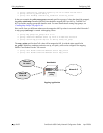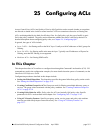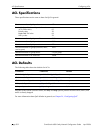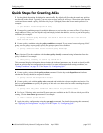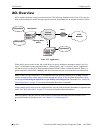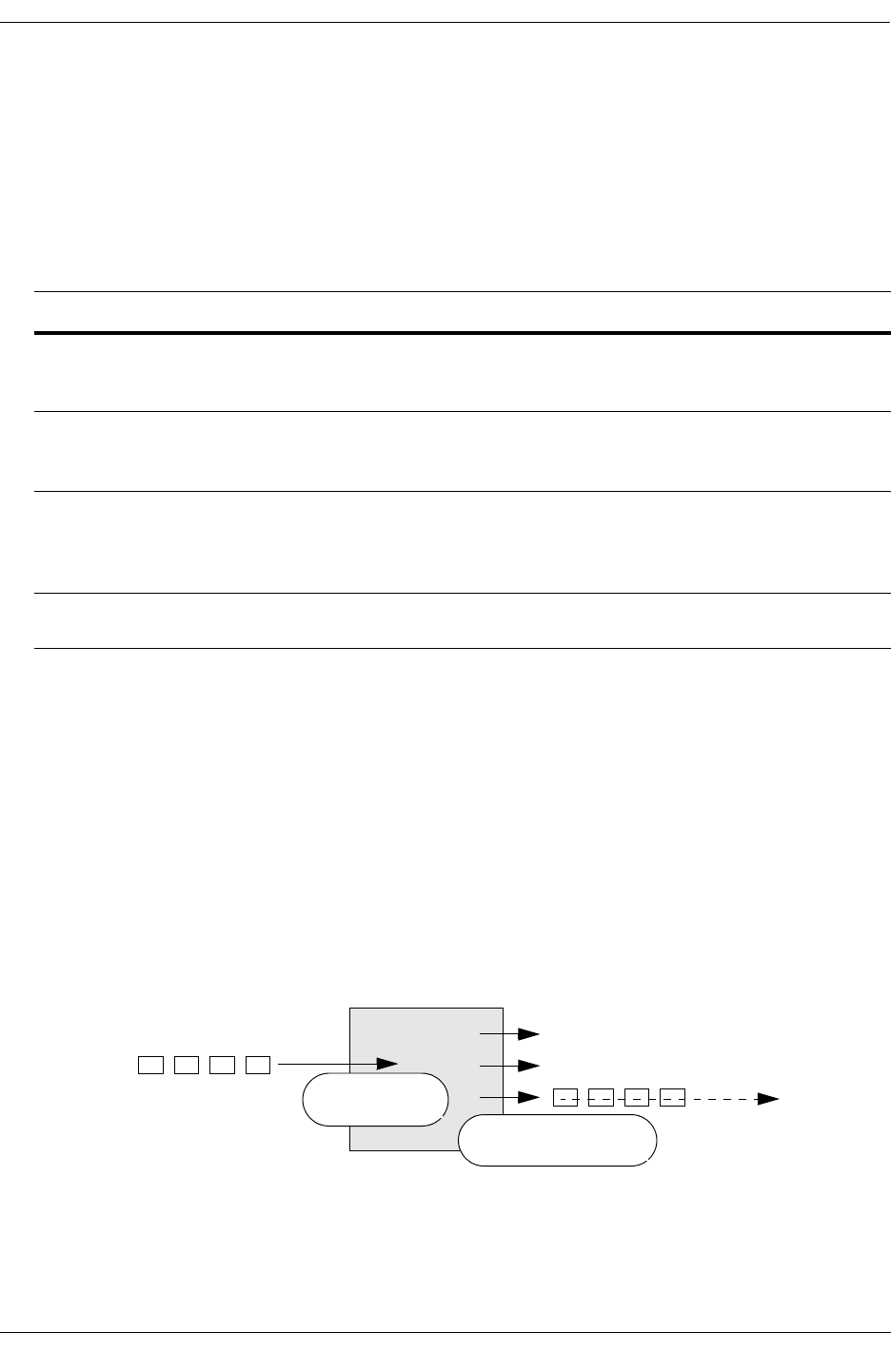
Configuring QoS Policy Applications
OmniSwitch 6600 Family Network Configuration Guide April 2006 page 24-49
Policy Applications
Policies are used to classify incoming flows and treat the relevant outgoing flows. There are many ways to
classify the traffic and many ways to apply QoS parameters to the traffic.
Classifying traffic may be as simple as identifying a Layer 2 or Layer 3 address of an incoming flow.
Treating the traffic might involve prioritizing the traffic, rewriting an IP address, or putting the flow in a
server load balancing group. How the traffic is treated (the action in the policy rule) typically defines the
type of policy:
This section describes how to configure basic QoS policies and 802.1p/ToS/DSCP marking and mapping
policies. Policies used for Layer 2 and Layer 3/4 filters, are commonly referred to as Access Control Lists
(ACLs). Filtering is discussed in Chapter 25, “Configuring ACLs.”
Policies may also be used for prioritizing traffic in dynamic link aggregation groups. For more informa-
tion about dynamic link aggregates, see Chapter 13, “Configuring Dynamic Link Aggregation.”
Basic QoS Policies
Traffic priorization and bandwidth shaping may be the most common types of QoS policies. For these
policies, any condition may be created; the policy action indicates how the traffic should be prioritized or
how the bandwidth should be shaped.
Type of Policy Description Action Parameters Used
Basic QoS policies Prioritizes particular flows, and/
or shapes the bandwidth for the
flow
maximum bandwidth
priority
ICMP policies Filters, prioritizes, and/or rate
limits ICMP traffic
disposition
priority
maximum bandwidth
802.1p, ToS, and DSCP tagging or
mapping policies
Sets or resets the egress 802.1p,
ToS, or DSCP values
802.1p
tos
dscp
map group
Access Control Lists (ACLs) Groups of policies rules used for
filtering traffic (allow/deny)
disposition
OmniSwitch
ingress flow
queues for egress traffic
policy condition
classifies the flow
policy action determines
how packets are queued



